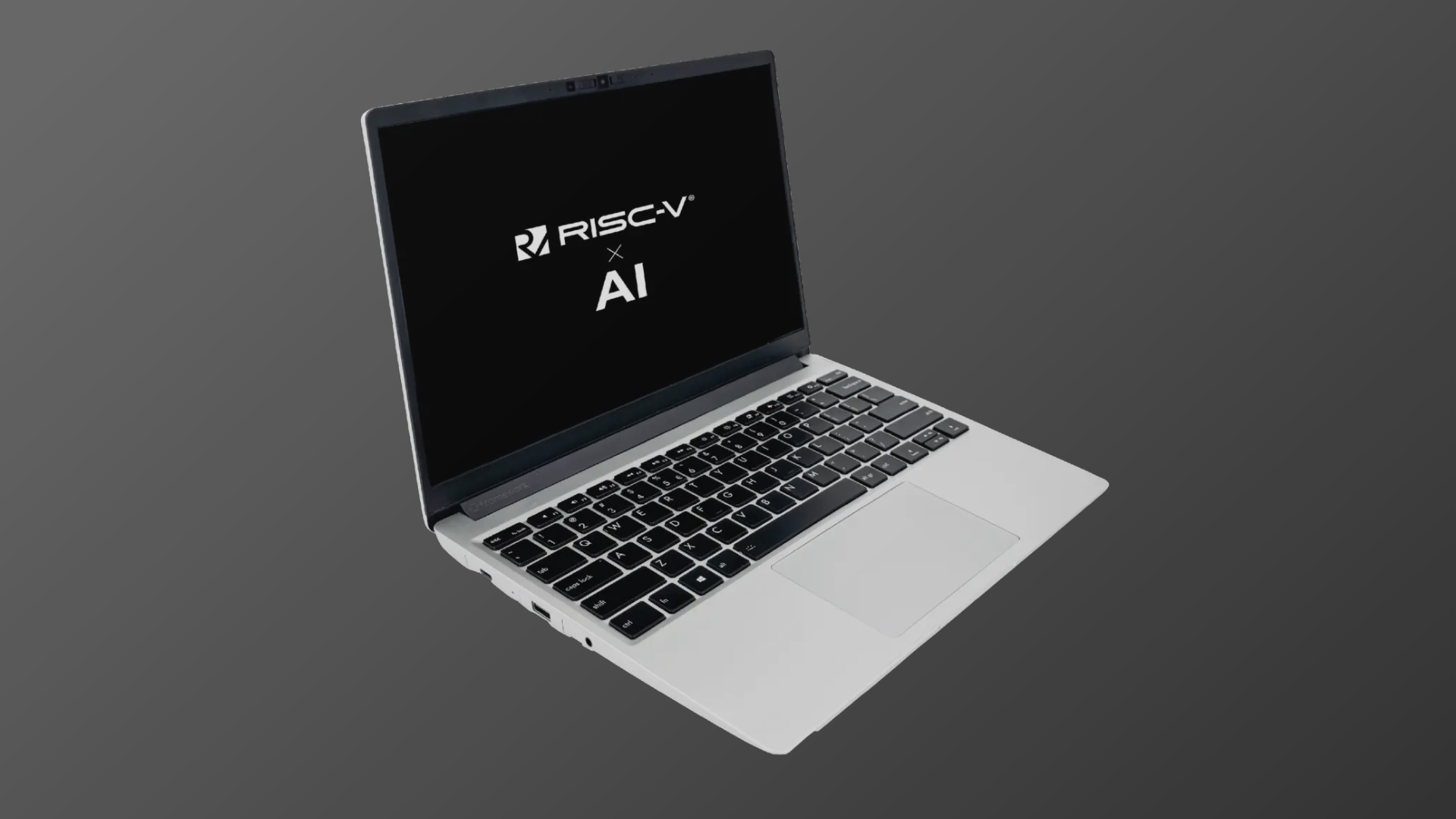RISC-V mini AI PC that fits inside a Framework laptop shell revealed — DeepComputing's DC-ROMA RISC-V AI PC claims 50 TOPS, 64GB RAM
Finally, a product for all 10 people waiting for a RISC-V AI machine.

DeepComputing has developed a reputation as a pioneer of small form factor RISC-V PCs, being the first company to bring a RISC-V laptop to the market in 2022. The company is now accepting pre-orders for its newest product, a mini AI PC that can replace the mainboard of the Framework Laptop 13.
The new device comes with two names: either the "DC-ROMA RISC-V AI PC" or the "DC-ROMA RISC-V Mainboard II for Framework Laptop 13" according to its listing page. The mainboard is one of many members of DeepComputing's DC-ROMA line, a family of SFF/laptop PCs all built on the RISC-V architecture set. It is also DeepComputing's second replacement mainboard for the Framework Laptop 13, with both the RISC-V AI PC and its predecessor functioning either inside the Framework or on its own as a stand-alone unit.
The specs of the DC-ROMA RISC-V AI PC are slightly mysterious. The device will be based on the "world's first RISC-V chiplet dual-die connected AI SoC." The mystery SoC will hold a 64-bit 8-core RISC-V CPU running at up to 2 GHz, along with an NPU, GPU, and VPU to cover all of the AI bases. VPUs are an emerging type of microprocessor devoted to vision-based machine learning tasks, distinct from GPUs as they have no rasterization or video encoding abilities.
The device will reportedly provide up to 50 TOPS of AI performance, with 40 TOPS coming just from the onboard NPU. The 3D-capable GPU onboard supports up to 8K@50Hz encoding, with the VPU tagging along for those vision-dependent AI training tasks. The mini PC supports up to 64GB of LPDDR5 RAM and NVMe SSDs, and we'd expect to see a microSD slot for the OS, as is common on DC-ROMA devices.
The only SoC that advertizes the same specs (and makes the same bold "world's first" claims) is Eswin Computing's EIC7702X, which is two Eswin EIC7700Xs stuck together. The dual-CPUs, two 4-core SiFive Performance P550s, are rated for up to 1.8 GHz each, paired with GPUs based on Imagination IP. The EIC7700X, one-half of the EIC7702X we expect to find in the DC-ROMA PC, can be seen on SiFive's HiFive Premier P550 developer board, which we reviewed earlier this year and gave 3.5 out of 5 stars.
RISC-V is an open-source instruction set architecture, similar to x86 or Arm. RISC-V development has been very active in recent years, especially in China, where its open-source nature provides a path forward for Chinese engineers stymied by an ongoing trade war with the United States. The DC-ROMA RISC-V AI PC, while not likely to blow anyone away with its speeds, does provide an extremely novel promise. Small form factor AI performance on the RISC-V platform is a very narrow intersection of three already niche worlds, but it may be a desirable buy for those happy few.
The RISC-V Mainboard II for Framework Laptop 13 (aka the DC-ROMA RISC-V AI PC) is available now for pre-order from DeepComputing. The device will start at $300 on its release in Q3 2025, with a $9.90 deposit required today. If it follows the pattern of the first DC-ROMA Framework mainboard, it will likely be sold as a standalone board, inside a mini-PC enclosure, or pre-assembled inside a Framework Laptop 13. We're cautiously optimistic about the future of this release, and as always stand ready to applaud any and all headway made towards a brighter future for RISC-V computing.
Get Tom's Hardware's best news and in-depth reviews, straight to your inbox.

Sunny Grimm is a contributing writer for Tom's Hardware. He has been building and breaking computers since 2017, serving as the resident youngster at Tom's. From APUs to RGB, Sunny has a handle on all the latest tech news.
-
SonoraTechnical not trying to be intentionally dense.... I jsut don't know the answer to this question... What readily available open source OS do you install on this?Reply -
Jaack18 Reply
Some flavor of LinuxSonoraTechnical said:not trying to be intentionally dense.... I jsut don't know the answer to this question... What readily available open source OS do you install on this? -
usertests ReplyVPUs are an emerging type of microprocessor devoted to vision-based machine learning tasks, distinct from GPUs as they have no rasterization or video encoding abilities.
Were Intel's ancient versions of GNA capable of doing this stuff, or was it only when they added an NPU and "VPU" to Meteor Lake?
I don't think this type of workload needs much performance. -
bit_user Reply
The GNA was too weak to do machine vision, I think. I'm not aware of any publicly available specs on it.usertests said:Were Intel's ancient versions of GNA capable of doing this stuff, or was it only when they added an NPU and "VPU" to Meteor Lake?
Depends on what sort of model you run, but I'd say it's generally on the order of at least a couple TOPS. Not the simplest image classifiers, but if you run any sort of YOLO-type model that can detect & classify multiple objects, as well as tell you where they are.usertests said:I don't think this type of workload needs much performance.